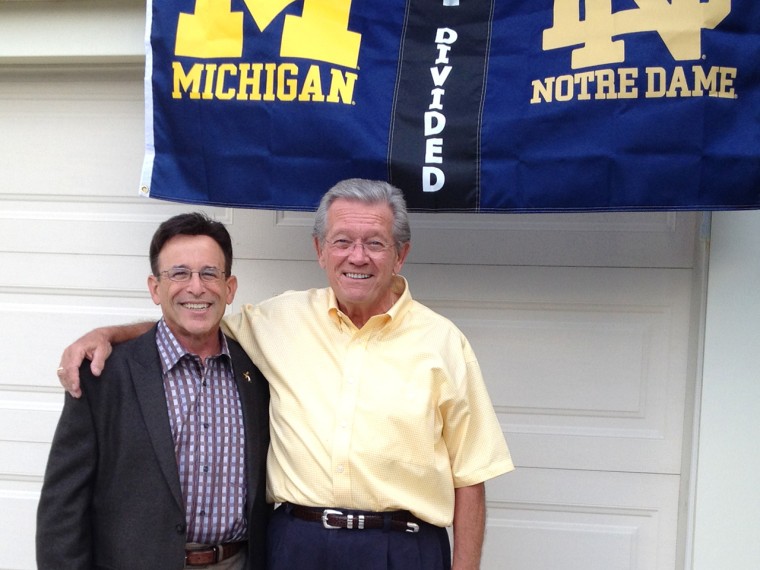A decade-long push to get U.S. doctors to speed up emergency treatment for the worst kind of heart attacks has worked -- but a new study finds that faster care doesn't necessarily reduce patient deaths.
Hospitals have been able to cut dramatically so-called door-to-balloon time, or D2B, the popular term for how long it takes to get a patient with a blocked artery from the door of the emergency room or paramedic van to treatment with angioplasty, a balloon that clears away the obstruction and saves a dying heart.
But even as D2B times fell from 83 minutes in 2006 to 67 minutes in 2009, deaths held steady at a little less than 5 percent, according to a new study of nearly 100,000 patients led by Michigan cardiologist Dr. Daniel Menees and published in the latest issue of the New England Journal of Medicine. Researchers studied how many patients died within 30 days of treatment.
“We are constantly being pushed by the clock. Are we moving fast and should we be moving faster?” asked Menees, an interventional cardiologist at the University of Michigan Health System. “This is considered to be an important quality measure. But is what we’re doing having the desired effect?”
Menees’ findings, which reflect data from 515 hospitals in the large CathPCI Registry, are sure to rock the cardiac world, said Dr. John Rumsfeld, a cardiologist and chief science officer for the American College of Cardiology.
“I think that bottom line conclusion will come as a surprise to many people,” he said, especially since D2B times may be one of the only hospital quality measures recognized by the general public.
Starting in about 2002, D2B times became a standard for quality care, with hospitals granted accreditation and federal Medicare and Medicaid reimbursements based on whether patients were treated within the goal time of 90 minutes. Patients can routinely pick hospitals based on their D2B times, thanks to public reporting requirements.
The aim was high -- to rapidly treat the victims of the most severe heart attacks, ST-segment elevation myocardial infarction, known as STEMIs, which occur when a cardiac artery is completely blocked. Of the 715,000 people who suffer heart attacks each year, according to the Centers for Disease Control and Prevention, about 250,000 are STEMIs. The preferred treatment is now primary percutaneous coronary intervention, or PCI, commonly known as angioplasty.
That’s the procedure Leo Staudacher had two years ago, when the 71-year-old retired broker from Bay City, Mich., suffered a heart attack in the second quarter of a Notre Dame vs. Michigan football game. Quick CPR from football fans Marvin Sonne and Jan Tardiff stabilized him. Doctors performed the balloon procedure so fast that Staudacher caught the final minutes of the game while recovering in his hospital room.
“I actually got to see Notre Dame score,” he said. (But Michigan won, 35-31.)
And the new study shows such speedy treatment has improved overall. The percentage of patients with D2B times of 90 minutes or less jumped from nearly 60 percent in the period from June 2005 to June 2006 to 83 percent in the period from July 2008 through June 2009.
In 2002, only about a third of patients received balloon treatment within 90 minutes and a third didn’t get the procedure for more than two hours.
For patients with treatment delayed past 90 minutes, the death rates continued to rise, jumping from 6.5 percent in the first year of the study to 8.9 percent in the last year, the new data showed.
Still, paring response times below the 90-minute mark didn’t actually translate into fewer patient deaths -- which may call the push for speed into question, said Menees.
There have been some unintended consequences: About a third of activations for STEMI teams are now false alarms and the rush has cut down on initial triage, diagnosis of additional symptoms and obtaining informed consent, an editorial in the NEJM notes.
“We’ve probably had an overemphasis on D2B time,” Menees said. “Clearly, it’s important to reevaluate it and reconsider. If you continue to push harder thinking going faster is better, that’s where my concern is.”
The study raises new questions about the focus on D2B, but no one’s thinking about abandoning it, the American College of Cardiology said. The ACC, like the American Heart Association, has made faster D2B a priority guideline -- and that will continue.
“Short-term mortality is not the only goal of door-to-balloon,” ACC President Dr. John G. Harold said in a statement. “We are also interested in recovery and quality of life after heart attack. Time is muscle and the sooner treatment begins, the less muscle is damaged.”
That preserves heart function -- and quality of life, he added.
Instead of the push for faster D2B, Menees and other cardiac experts say more attention needs to focus on the time before patients get to the hospital. Earlier recognition of symptoms and faster calls to 911 may be the best way to help nudge the death rate down, experts say.
That all makes sense to Staudacher, who said the entire chain of survival worked in his favor.
“I think the key is on-the-spot,” he said. “If somebody didn’t know CPR I wouldn’t be here. If they couldn’t have gotten the AED to me, the doctors wouldn’t have been able to save me.”
JoNel Aleccia is a senior health reporter with NBC News. Reach her on Twitter at @JoNel_Aleccia or send her an email.
